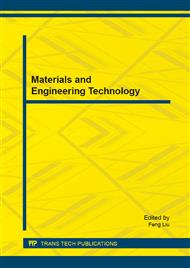p.193
p.197
p.202
p.206
p.210
p.214
p.221
p.231
p.238
Experimental Analysis of Different Kinds of Sandstone for Reconstruction of Historical Masonry
Abstract:
In reconstruction works on historical buildings, considerable expenses are spent. Therefore, it is desirable to assess durability of applied materials in the particular conditions of a specific building. This cannot be done effectively without the knowledge of their basic physical and hygric properties, which give information on materials performance within their exposure to harmful climatic conditions. In this paper, experimental analysis of five types of sandstone originally used over the Czech territory for historical buildings, monuments and ornamental parts of architecture, is presented. On the basis of obtained results, the materials behavior at real service conditions can be assessed, which is necessary information for their practical usage.
Info:
Periodical:
Pages:
210-213
Citation:
Online since:
January 2015
Authors:
Price:
Сopyright:
© 2015 Trans Tech Publications Ltd. All Rights Reserved
Share:
Citation:



